To the Shareholders of Berkshire Hathaway Inc.:
Our gain in net worth during 1991 was $2.1 billion, or
39.6%. Over the last 27 years (that is, since present management
took over) our per-share book value has grown from $19 to $6,437,
or at a rate of 23.7% compounded annually.
The size of our equity capital - which now totals $7.4
billion - makes it certain that we cannot maintain our past rate
of gain or, for that matter, come close to doing so. As Berkshire
grows, the universe of opportunities that can significantly
influence the company's performance constantly shrinks. When we
were working with capital of $20 million, an idea or business
producing $1 million of profit added five percentage points to
our return for the year. Now we need a $370 million idea (i.e.,
one contributing over $550 million of pre-tax profit) to achieve
the same result. And there are many more ways to make $1 million
than to make $370 million.
Charlie Munger, Berkshire's Vice Chairman, and I have set a
goal of attaining a 15% average annual increase in Berkshire's
intrinsic value. If our growth in book value is to keep up with a
15% pace, we must earn $22 billion during the next decade. Wish
us luck - we'll need it.
Our outsized gain in book value in 1991 resulted from a
phenomenon not apt to be repeated: a dramatic rise in the price-
earnings ratios of Coca-Cola and Gillette. These two stocks
accounted for nearly $1.6 billion of our $2.1 billion growth in
net worth last year. When we loaded up on Coke three years ago,
Berkshire's net worth was $3.4 billion; now our Coke stock alone
is worth more than that.
Coca-Cola and Gillette are two of the best companies in the
world and we expect their earnings to grow at hefty rates in the
years ahead. Over time, also, the value of our holdings in these
stocks should grow in rough proportion. Last year, however, the
valuations of these two companies rose far faster than their
earnings. In effect, we got a double-dip benefit, delivered
partly by the excellent earnings growth and even more so by the
market's reappraisal of these stocks. We believe this reappraisal
was warranted. But it can't recur annually: We'll have to settle
for a single dip in the future.
A Second Job
In 1989 when I - a happy consumer of five cans of Cherry
Coke daily - announced our purchase of $1 billion worth of Coca-
Cola stock, I described the move as a rather extreme example of
putting our money where my mouth was. On August 18 of last year,
when I was elected Interim Chairman of Salomon Inc, it was a
different story: I put my mouth where our money was.
You've all read of the events that led to my appointment. My
decision to take the job carried with it an implicit but
important message: Berkshire's operating managers are so
outstanding that I knew I could materially reduce the time I was
spending at the company and yet remain confident that its
economic progress would not skip a beat. The Blumkins, the
Friedman family, Mike Goldberg, the Heldmans, Chuck Huggins, Stan
Lipsey, Ralph Schey and Frank Rooney (CEO of H.H. Brown, our
latest acquisition, which I will describe later) are all masters
of their operations and need no help from me. My job is merely to
treat them right and to allocate the capital they generate.
B
E
R
K
S
H
I
R
E
H
A
T
H
A
W
A
Y
I
N
C
.
�
Neither function is impeded by my work at Salomon.
The role that Charlie and I play in the success of our
operating units can be illustrated by a story about George Mira,
the one-time quarterback of the University of Miami, and his
coach, Andy Gustafson. Playing Florida and near its goal line,
Mira dropped back to pass. He spotted an open receiver but found
his right shoulder in the unshakable grasp of a Florida
linebacker. The right-handed Mira thereupon switched the ball to
his other hand and threw the only left-handed pass of his life -
for a touchdown. As the crowd erupted, Gustafson calmly turned to
a reporter and declared: "Now that's what I call coaching."
Given the managerial stars we have at our operating units,
Berkshire's performance is not affected if Charlie or I slip away
from time to time. You should note, however, the "interim" in my
Salomon title. Berkshire is my first love and one that will never
fade: At the Harvard Business School last year, a student asked
me when I planned to retire and I replied, "About five to ten
years after I die."
Sources of Reported Earnings
The table below shows the major sources of Berkshire's
reported earnings. In this presentation, amortization of Goodwill
and other major purchase-price accounting adjustments are not
charged against the specific businesses to which they apply, but
are instead aggregated and shown separately. This procedure lets
you view the earnings of our businesses as they would have been
reported had we not purchased them. I've explained in past
reports why this form of presentation seems to us to be more
useful to investors and managers than one utilizing generally
accepted accounting principles (GAAP), which require purchase-
price adjustments to be made on a business-by-business basis. The
total net earnings we show in the table are, of course, identical
to the GAAP total in our audited financial statements.
A large amount of additional information about these
businesses is given on pages 33-47, where you also will find
our segment earnings reported on a GAAP basis. However, we will
not in this letter discuss each of our non-insurance operations,
as we have in the past. Our businesses have grown in number - and
will continue to grow - so it now makes sense to rotate coverage,
discussing one or two in detail each year.
(000s omitted)
----------------------------------------------
Berkshire's Share
of Net Earnings
(after taxes and
Pre-Tax Earnings minority interests)
---------------------- ----------------------
1991 1990 1991 1990
---------- ---------- ---------- ----------
Operating Earnings:
Insurance Group:
Underwriting ............ $(119,593) $ (26,647) $ (77,229) $ (14,936)
Net Investment Income ... 331,846 327,047 285,173 282,613
H. H. Brown (acquired 7/1/91) 13,616 --- 8,611 ---
Buffalo News .............. 37,113 43,954 21,841 25,981
Fechheimer ................ 12,947 12,450 6,843 6,605
Kirby ..................... 35,726 27,445 22,555 17,613
Nebraska Furniture Mart ... 14,384 17,248 6,993 8,485
Scott Fetzer
Manufacturing Group .... 26,123 30,378 15,901 18,458
See's Candies ............. 42,390 39,580 25,575 23,892
Wesco - other than Insurance 12,230 12,441 8,777 9,676
World Book ................ 22,483 31,896 15,487 20,420
Amortization of Goodwill .. (4,113) (3,476) (4,098) (3,461)
�
Other Purchase-Price
Accounting Charges ..... (6,021) (5,951) (7,019) (6,856)
Interest Expense* ......... (89,250) (76,374) (57,165) (49,726)
Shareholder-Designated
Contributions .......... (6,772) (5,824) (4,388) (3,801)
Other ..................... 77,399 58,310 47,896 35,782
---------- ---------- ---------- ----------
Operating Earnings 400,508 482,477 315,753 370,745
Sales of Securities 192,478 33,989 124,155 23,348
Total Earnings - All Entities $ 592,986 $ 516,466 $ 439,908 $ 394,093
*Excludes interest expense of Scott Fetzer Financial Group and
Mutual Savings & Loan.
"Look-Through" Earnings
We've previously discussed look-through earnings, which
consist of: (1) the operating earnings reported in the previous
section, plus; (2) the retained operating earnings of major
investees that, under GAAP accounting, are not reflected in our
profits, less; (3) an allowance for the tax that would be paid by
Berkshire if these retained earnings of investees had instead been
distributed to us.
I've told you that over time look-through earnings must
increase at about 15% annually if our intrinsic business value is
to grow at that rate. Indeed, since present management took over in
1965, our look-through earnings have grown at almost the identical
23% rate of gain recorded for book value.
Last year, however, our look-through earnings did not grow at
all but rather declined by 14%. To an extent, the decline was
precipitated by two forces that I discussed in last year's report
and that I warned you would have a negative effect on look-through
earnings.
First, I told you that our media earnings - both direct and
look-through - were "sure to decline" and they in fact did. The
second force came into play on April 1, when the call of our
Gillette preferred stock required us to convert it into common. The
after-tax earnings in 1990 from our preferred had been about $45
million, an amount somewhat higher than the combination in 1991 of
three months of dividends on our preferred plus nine months of
look-through earnings on the common.
Two other outcomes that I did not foresee also hurt look-
through earnings in 1991. First, we had a break-even result from
our interest in Wells Fargo (dividends we received from the company
were offset by negative retained earnings). Last year I said that
such a result at Wells was "a low-level possibility - not a
likelihood." Second, we recorded significantly lower - though still
excellent - insurance profits.
The following table shows you how we calculate look-through
earnings, although I warn you that the figures are necessarily very
rough. (The dividends paid to us by these investees have been
included in the operating earnings itemized on page 6, mostly
under "Insurance Group: Net Investment Income.")
Berkshire's Share
of Undistributed
Berkshire's Approximate Operating Earnings
Berkshire's Major Investees Ownership at Yearend (in millions)
--------------------------- ----------------------- ------------------
1991 1990 1991 1990
------ ------ -------- --------
Capital Cities/ABC Inc. ........ 18.1% 17.9% $ 61 $ 85
�
The Coca-Cola Company .......... 7.0% 7.0% 69 58
Federal Home Loan Mortgage Corp. 3.4%(1) 3.2%(1) 15 10
The Gillette Company ........... 11.0% --- 23(2) ---
GEICO Corp. .................... 48.2% 46.1% 69 76
The Washington Post Company .... 14.6% 14.6% 10 18
Wells Fargo & Company .......... 9.6% 9.7% (17) 19(3)
-------- --------
Berkshire's share of
undistributed earnings of major investees $230 $266
Hypothetical tax on these undistributed investee earnings (30) (35)
Reported operating earnings of Berkshire 316 371
-------- --------
Total look-through earnings of Berkshire $516 $602
======== ========
(1) Net of minority interest at Wesco
(2) For the nine months after Berkshire converted its
preferred on April 1
(3) Calculated on average ownership for the year
* * * * * * * * * * * *
We also believe that investors can benefit by focusing on
their own look-through earnings. To calculate these, they should
determine the underlying earnings attributable to the shares they
hold in their portfolio and total these. The goal of each investor
should be to create a portfolio (in effect, a "company") that will
deliver him or her the highest possible look-through earnings a
decade or so from now.
An approach of this kind will force the investor to think
about long-term business prospects rather than short-term stock
market prospects, a perspective likely to improve results. It's
true, of course, that, in the long run, the scoreboard for
investment decisions is market price. But prices will be determined
by future earnings. In investing, just as in baseball, to put runs
on the scoreboard one must watch the playing field, not the
scoreboard.
A Change in Media Economics and Some Valuation Math
In last year's report, I stated my opinion that the decline in
the profitability of media companies reflected secular as well as
cyclical factors. The events of 1991 have fortified that case: The
economic strength of once-mighty media enterprises continues to
erode as retailing patterns change and advertising and
entertainment choices proliferate. In the business world,
unfortunately, the rear-view mirror is always clearer than the
windshield: A few years back no one linked to the media business -
neither lenders, owners nor financial analysts - saw the economic
deterioration that was in store for the industry. (But give me a
few years and I'll probably convince myself that I did.)
The fact is that newspaper, television, and magazine
properties have begun to resemble businesses more than franchises
in their economic behavior. Let's take a quick look at the
characteristics separating these two classes of enterprise, keeping
in mind, however, that many operations fall in some middle ground
and can best be described as weak franchises or strong businesses.
An economic franchise arises from a product or service that:
(1) is needed or desired; (2) is thought by its customers to have
no close substitute and; (3) is not subject to price regulation.
The existence of all three conditions will be demonstrated by a
company's ability to regularly price its product or service
aggressively and thereby to earn high rates of return on capital.
Moreover, franchises can tolerate mis-management. Inept managers
may diminish a franchise's profitability, but they cannot inflict
mortal damage.
�
In contrast, "a business" earns exceptional profits only if it
is the low-cost operator or if supply of its product or service is
tight. Tightness in supply usually does not last long. With
superior management, a company may maintain its status as a low-
cost operator for a much longer time, but even then unceasingly
faces the possibility of competitive attack. And a business, unlike
a franchise, can be killed by poor management.
Until recently, media properties possessed the three
characteristics of a franchise and consequently could both price
aggressively and be managed loosely. Now, however, consumers
looking for information and entertainment (their primary interest
being the latter) enjoy greatly broadened choices as to where to
find them. Unfortunately, demand can't expand in response to this
new supply: 500 million American eyeballs and a 24-hour day are all
that's available. The result is that competition has intensified,
markets have fragmented, and the media industry has lost some -
though far from all - of its franchise strength.
* * * * * * * * * * * *
The industry's weakened franchise has an impact on its value
that goes far beyond the immediate effect on earnings. For an
understanding of this phenomenon, let's look at some much over-
simplified, but relevant, math.
A few years ago the conventional wisdom held that a newspaper,
television or magazine property would forever increase its earnings
at 6% or so annually and would do so without the employment of
additional capital, for the reason that depreciation charges would
roughly match capital expenditures and working capital requirements
would be minor. Therefore, reported earnings (before amortization
of intangibles) were also freely-distributable earnings, which
meant that ownership of a media property could be construed as akin
to owning a perpetual annuity set to grow at 6% a year. Say, next,
that a discount rate of 10% was used to determine the present value
of that earnings stream. One could then calculate that it was
appropriate to pay a whopping $25 million for a property with
current after-tax earnings of $1 million. (This after-tax multiplier
of 25 translates to a multiplier on pre-tax earnings of about 16.)
Now change the assumption and posit that the $1 million
represents "normal earning power" and that earnings will bob around
this figure cyclically. A "bob-around" pattern is indeed the lot of
most businesses, whose income stream grows only if their owners are
willing to commit more capital (usually in the form of retained
earnings). Under our revised assumption, $1 million of earnings,
discounted by the same 10%, translates to a $10 million valuation.
Thus a seemingly modest shift in assumptions reduces the property's
valuation to 10 times after-tax earnings (or about 6 1/2 times
pre-tax earnings).
Dollars are dollars whether they are derived from the
operation of media properties or of steel mills. What in the past
caused buyers to value a dollar of earnings from media far higher
than a dollar from steel was that the earnings of a media property
were expected to constantly grow (without the business requiring
much additional capital), whereas steel earnings clearly fell in
the bob-around category. Now, however, expectations for media have
moved toward the bob-around model. And, as our simplified example
illustrates, valuations must change dramatically when expectations
are revised.
We have a significant investment in media - both through our
direct ownership of Buffalo News and our shareholdings in The
Washington Post Company and Capital Cities/ABC - and the intrinsic
value of this investment has declined materially because of the
secular transformation that the industry is experiencing. (Cyclical
�
factors have also hurt our current look-through earnings, but these
factors do not reduce intrinsic value.) However, as our Business
Principles on page 2-3 note, one of the rules by which we run
Berkshire is that we do not sell businesses - or investee holdings
that we have classified as permanent - simply because we see ways
to use the money more advantageously elsewhere. (We did sell
certain other media holdings sometime back, but these were
relatively small.)
The intrinsic value losses that we have suffered have been
moderated because the Buffalo News, under Stan Lipsey's leadership,
has done far better than most newspapers and because both Cap
Cities and Washington Post are exceptionally well-managed. In
particular, these companies stayed on the sidelines during the late
1980's period in which purchasers of media properties regularly
paid irrational prices. Also, the debt of both Cap Cities and
Washington Post is small and roughly offset by cash that they hold.
As a result, the shrinkage in the value of their assets has not
been accentuated by the effects of leverage. Among publicly-owned
media companies, our two investees are about the only ones
essentially free of debt. Most of the other companies, through a
combination of the aggressive acquisition policies they pursued and
shrinking earnings, find themselves with debt equal to five or more
times their current net income.
The strong balance sheets and strong managements of Cap Cities
and Washington Post leave us more comfortable with these
investments than we would be with holdings in any other media
companies. Moreover, most media properties continue to have far
better economic characteristics than those possessed by the average
American business. But gone are the days of bullet-proof franchises
and cornucopian economics.
Twenty Years in a Candy Store
We've just passed a milestone: Twenty years ago, on January 3,
1972, Blue Chip Stamps (then an affiliate of Berkshire and later
merged into it) bought control of See's Candy Shops, a West Coast
manufacturer and retailer of boxed-chocolates. The nominal price
that the sellers were asking - calculated on the 100% ownership we
ultimately attained - was $40 million. But the company had $10
million of excess cash, and therefore the true offering price was
$30 million. Charlie and I, not yet fully appreciative of the value
of an economic franchise, looked at the company's mere $7 million
of tangible net worth and said $25 million was as high as we would
go (and we meant it). Fortunately, the sellers accepted our offer.
The sales of trading stamps by Blue Chip thereafter declined
from $102.5 million in 1972 to $1.2 million in 1991. But See's
candy sales in the same period increased from $29 million to $196
million. Moreover, profits at See's grew even faster than sales,
from $4.2 million pre-tax in 1972 to $42.4 million last year.
For an increase in profits to be evaluated properly, it must
be compared with the incremental capital investment required to
produce it. On this score, See's has been astounding: The company
now operates comfortably with only $25 million of net worth, which
means that our beginning base of $7 million has had to be
supplemented by only $18 million of reinvested earnings. Meanwhile,
See's remaining pre-tax profits of $410 million were distributed to
Blue Chip/Berkshire during the 20 years for these companies to
deploy (after payment of taxes) in whatever way made most sense.
In our See's purchase, Charlie and I had one important
insight: We saw that the business had untapped pricing power.
Otherwise, we were lucky twice over. First, the transaction was not
derailed by our dumb insistence on a $25 million price. Second, we
found Chuck Huggins, then See's executive vice-president, whom we
instantly put in charge. Both our business and personal experiences
�
with Chuck have been outstanding. One example: When the purchase
was made, we shook hands with Chuck on a compensation arrangement -
conceived in about five minutes and never reduced to a written
contract - that remains unchanged to this day.
In 1991, See's sales volume, measured in dollars, matched that
of 1990. In pounds, however, volume was down 4%. All of that
slippage took place in the last two months of the year, a period
that normally produces more than 80% of annual profits. Despite the
weakness in sales, profits last year grew 7%, and our pre-tax
profit margin was a record 21.6%.
Almost 80% of See's sales come from California and our
business clearly was hurt by the recession, which hit the state
with particular force late in the year. Another negative, however,
was the mid-year initiation in California of a sales tax of 7%-8«%
(depending on the county involved) on "snack food" that was deemed
applicable to our candy.
Shareholders who are students of epistemological shadings will
enjoy California's classifications of "snack" and "non-snack"
foods:
Taxable "Snack" Foods Non-Taxable "Non-Snack" Foods
--------------------- -----------------------------
Ritz Crackers Soda Crackers
Popped Popcorn Unpopped Popcorn
Granola Bars Granola Cereal
Slice of Pie (Wrapped) Whole Pie
Milky Way Candy Bar Milky Way Ice Cream Bar
What - you are sure to ask - is the tax status of a melted
Milky Way ice cream bar? In that androgynous form, does it more
resemble an ice cream bar or a candy bar that has been left in the
sun? It's no wonder that Brad Sherman, Chairman of California's
State Board of Equalization, who opposed the snack food bill but
must now administer it, has said: "I came to this job as a
specialist in tax law. Now I find my constituents should have
elected Julia Child."
Charlie and I have many reasons to be thankful for our
association with Chuck and See's. The obvious ones are that we've
earned exceptional returns and had a good time in the process.
Equally important, ownership of See's has taught us much about the
evaluation of franchises. We've made significant money in certain
common stocks because of the lessons we learned at See's.
H. H. Brown
We made a sizable acquisition in 1991 - the H. H. Brown
Company - and behind this business is an interesting history. In
1927 a 29-year-old businessman named Ray Heffernan purchased the
company, then located in North Brookfield, Massachusetts, for
$10,000 and began a 62-year career of running it. (He also found
time for other pursuits: At age 90 he was still joining new golf
clubs.) By Mr. Heffernan's retirement in early 1990 H. H. Brown had
three plants in the United States and one in Canada; employed close
to 2,000 people; and earned about $25 million annually before
taxes.
Along the way, Frances Heffernan, one of Ray's daughters,
married Frank Rooney, who was sternly advised by Mr. Heffernan
before the wedding that he had better forget any ideas he might
have about working for his father-in-law. That was one of Mr.
Heffernan's few mistakes: Frank went on to become CEO of Melville
Shoe (now Melville Corp.). During his 23 years as boss, from 1964
through 1986, Melville's earnings averaged more than 20% on equity
and its stock (adjusted for splits) rose from $16 to $960. And a
few years after Frank retired, Mr. Heffernan, who had fallen ill,
�
asked him to run Brown.
After Mr. Heffernan died late in 1990, his family decided to
sell the company - and here we got lucky. I had known Frank for a
few years but not well enough for him to think of Berkshire as a
possible buyer. He instead gave the assignment of selling Brown to
a major investment banker, which failed also to think of us. But
last spring Frank was playing golf in Florida with John Loomis, a
long-time friend of mine as well as a Berkshire shareholder, who is
always on the alert for something that might fit us. Hearing about
the impending sale of Brown, John told Frank that the company
should be right up Berkshire's alley, and Frank promptly gave me a
call. I thought right away that we would make a deal and before
long it was done.
Much of my enthusiasm for this purchase came from Frank's
willingness to continue as CEO. Like most of our managers, he has
no financial need to work but does so because he loves the game and
likes to excel. Managers of this stripe cannot be "hired" in the
normal sense of the word. What we must do is provide a concert hall
in which business artists of this class will wish to perform.
Brown (which, by the way, has no connection to Brown Shoe of
St. Louis) is the leading North American manufacturer of work shoes
and boots, and it has a history of earning unusually fine margins
on sales and assets. Shoes are a tough business - of the billion
pairs purchased in the United States each year, about 85% are
imported - and most manufacturers in the industry do poorly. The
wide range of styles and sizes that producers offer causes
inventories to be heavy; substantial capital is also tied up in
receivables. In this kind of environment, only outstanding managers
like Frank and the group developed by Mr. Heffernan can prosper.
A distinguishing characteristic of H. H. Brown is one of the
most unusual compensation systems I've encountered - but one that
warms my heart: A number of key managers are paid an annual salary
of $7,800, to which is added a designated percentage of the profits
of the company after these are reduced by a charge for capital
employed. These managers therefore truly stand in the shoes of
owners. In contrast, most managers talk the talk but don't walk the
walk, choosing instead to employ compensation systems that are long
on carrots but short on sticks (and that almost invariably treat
equity capital as if it were cost-free). The arrangement at Brown,
in any case, has served both the company and its managers
exceptionally well, which should be no surprise: Managers eager to
bet heavily on their abilities usually have plenty of ability to
bet on.
* * * * * * * * * * * *
It's discouraging to note that though we have on four
occasions made major purchases of companies whose sellers were
represented by prominent investment banks, we were in only one of
these instances contacted by the investment bank. In the other
three cases, I myself or a friend initiated the transaction at some
point after the investment bank had solicited its own list of
prospects. We would love to see an intermediary earn its fee by
thinking of us - and therefore repeat here what we're looking for:
(1) Large purchases (at least $10 million of after-tax
earnings),
(2) Demonstrated consistent earning power (future projections
are of little interest to us, nor are "turnaround"
situations),
(3) Businesses earning good returns on equity while employing
little or no debt,
(4) Management in place (we can't supply it),
(5) Simple businesses (if there's lots of technology, we
won't understand it),
�
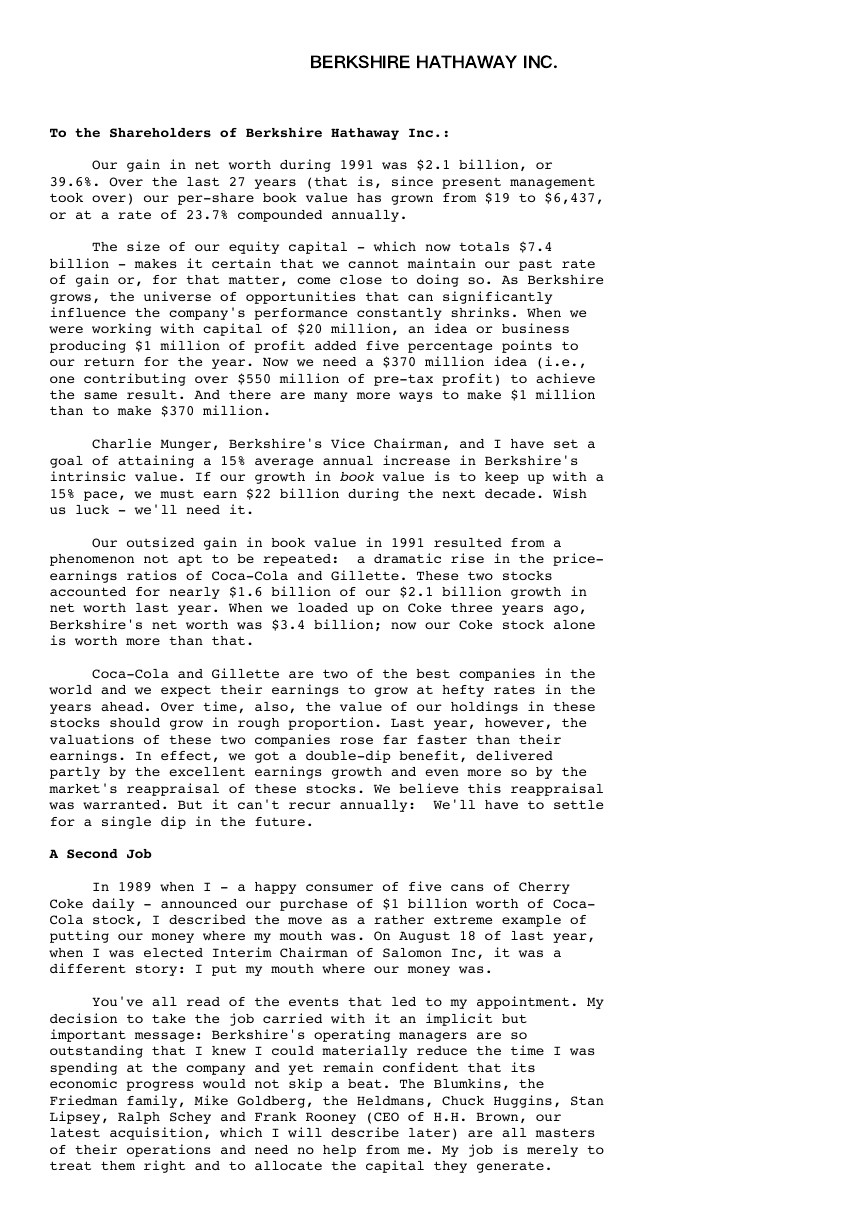















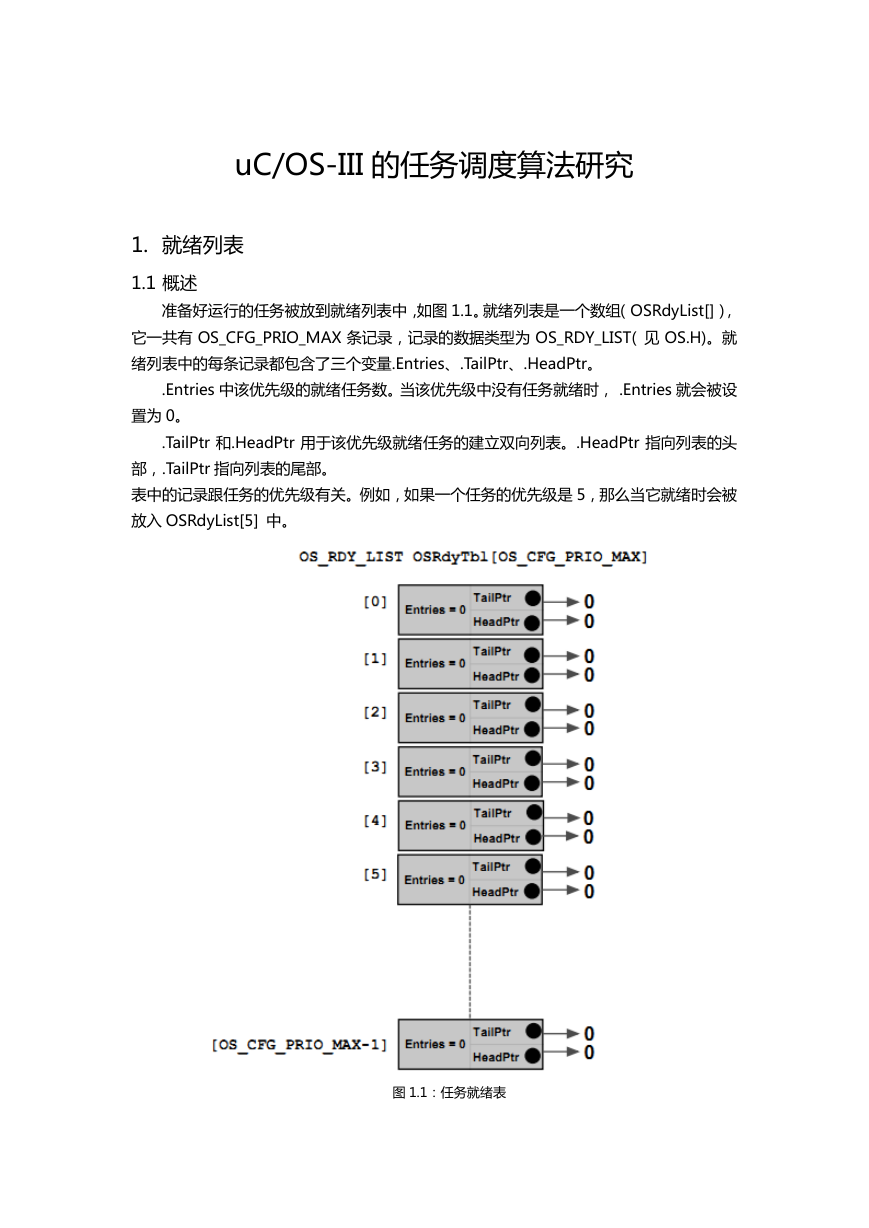 uCOS-III的任务调度算法研究.pdf
uCOS-III的任务调度算法研究.pdf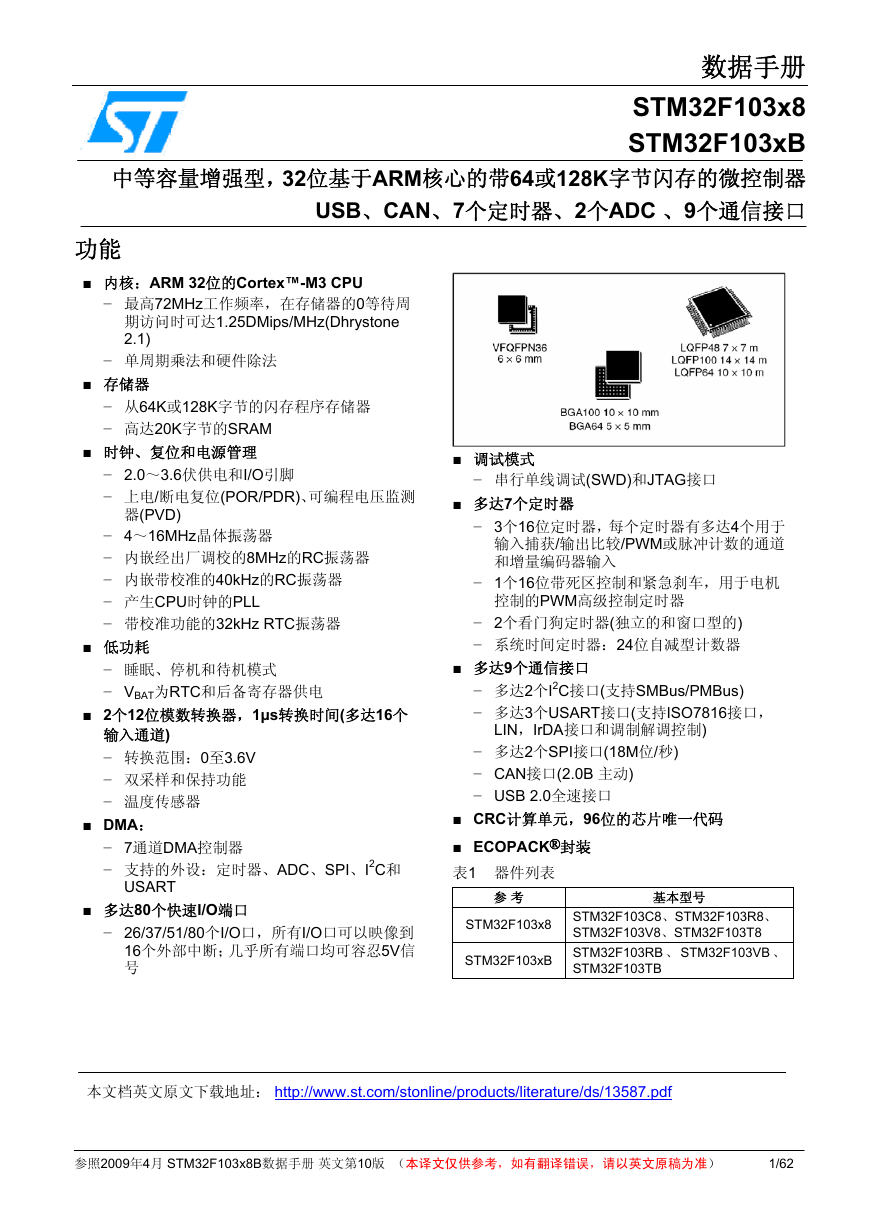 STM32F103x8B_DS_CH_V10(7STM32中文数据手册).pdf
STM32F103x8B_DS_CH_V10(7STM32中文数据手册).pdf FX2N系列PLC培训教程.pdf
FX2N系列PLC培训教程.pdf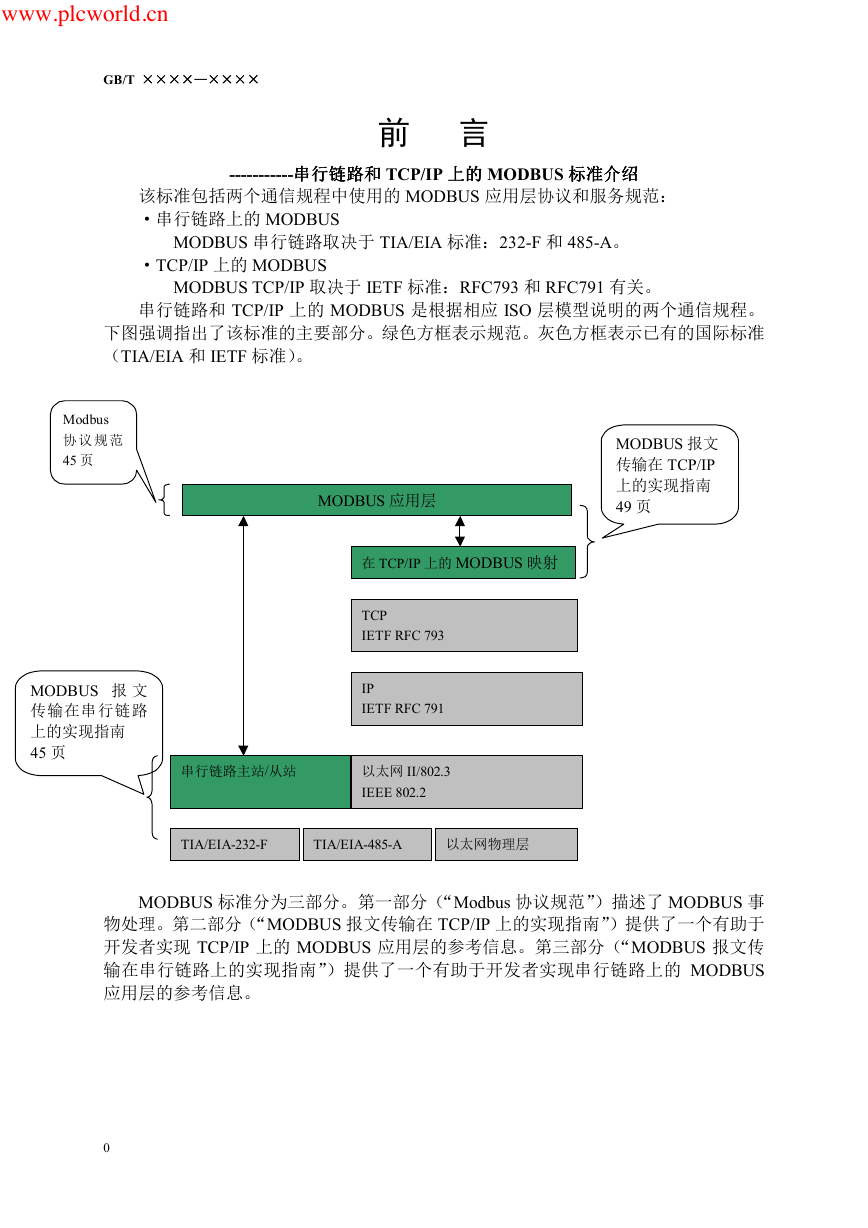 Modbus协议资料.pdf
Modbus协议资料.pdf WM8978中文资料(芯片资料).doc
WM8978中文资料(芯片资料).doc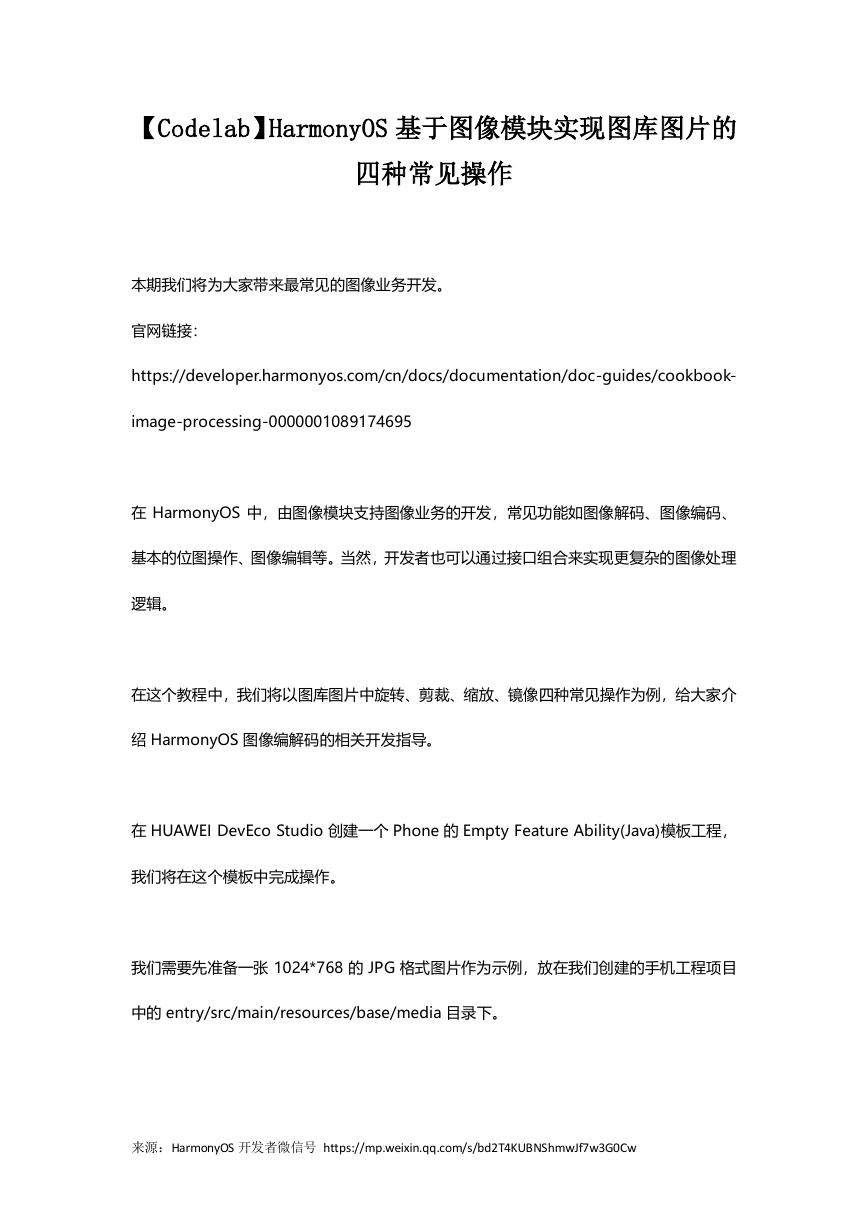 5-1.【Codelab】HarmonyOS基于图像模块实现图库图片的四种常见操作.pdf
5-1.【Codelab】HarmonyOS基于图像模块实现图库图片的四种常见操作.pdf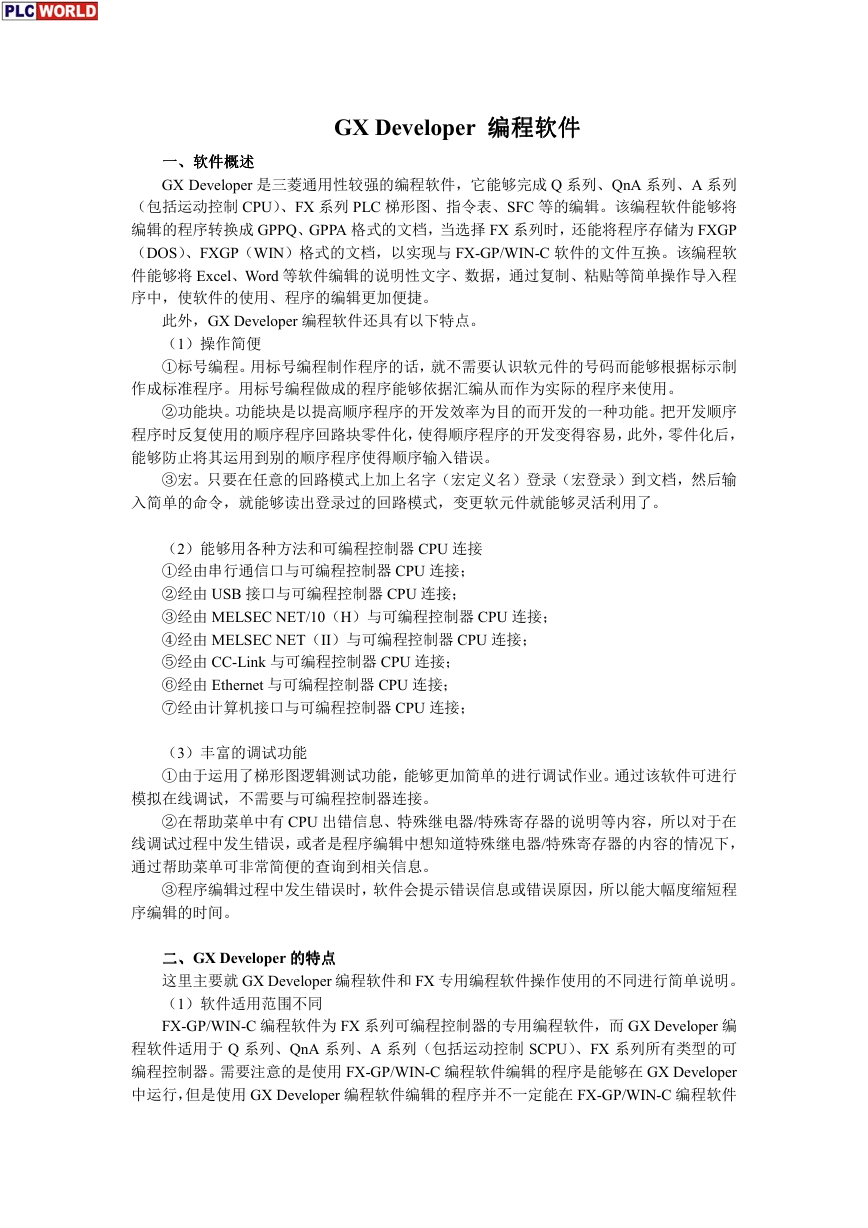 GX Developer 编程软件使用说明.pdf
GX Developer 编程软件使用说明.pdf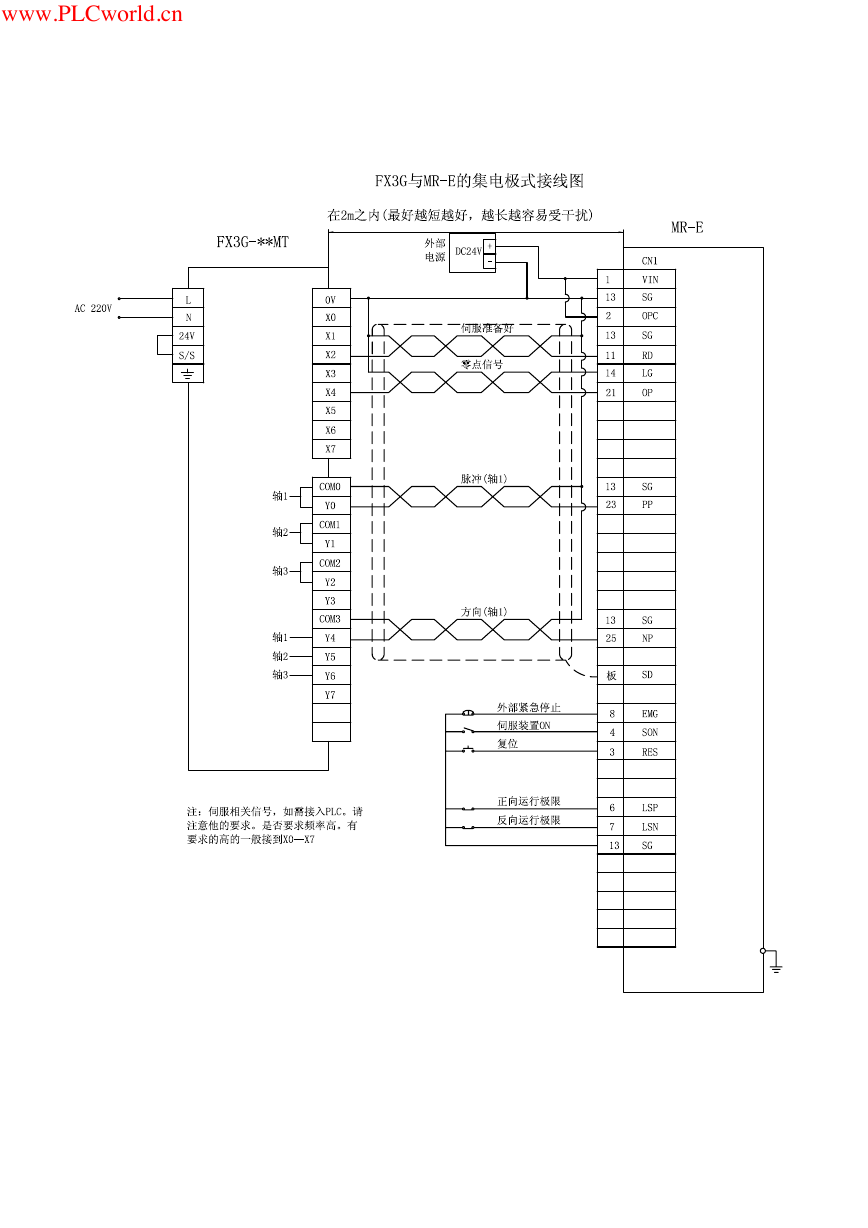 MR-E伺服与FX3G接线图.pdf
MR-E伺服与FX3G接线图.pdf ATK-NEO-6M GPS模块常见问题汇总_201400721.pdf
ATK-NEO-6M GPS模块常见问题汇总_201400721.pdf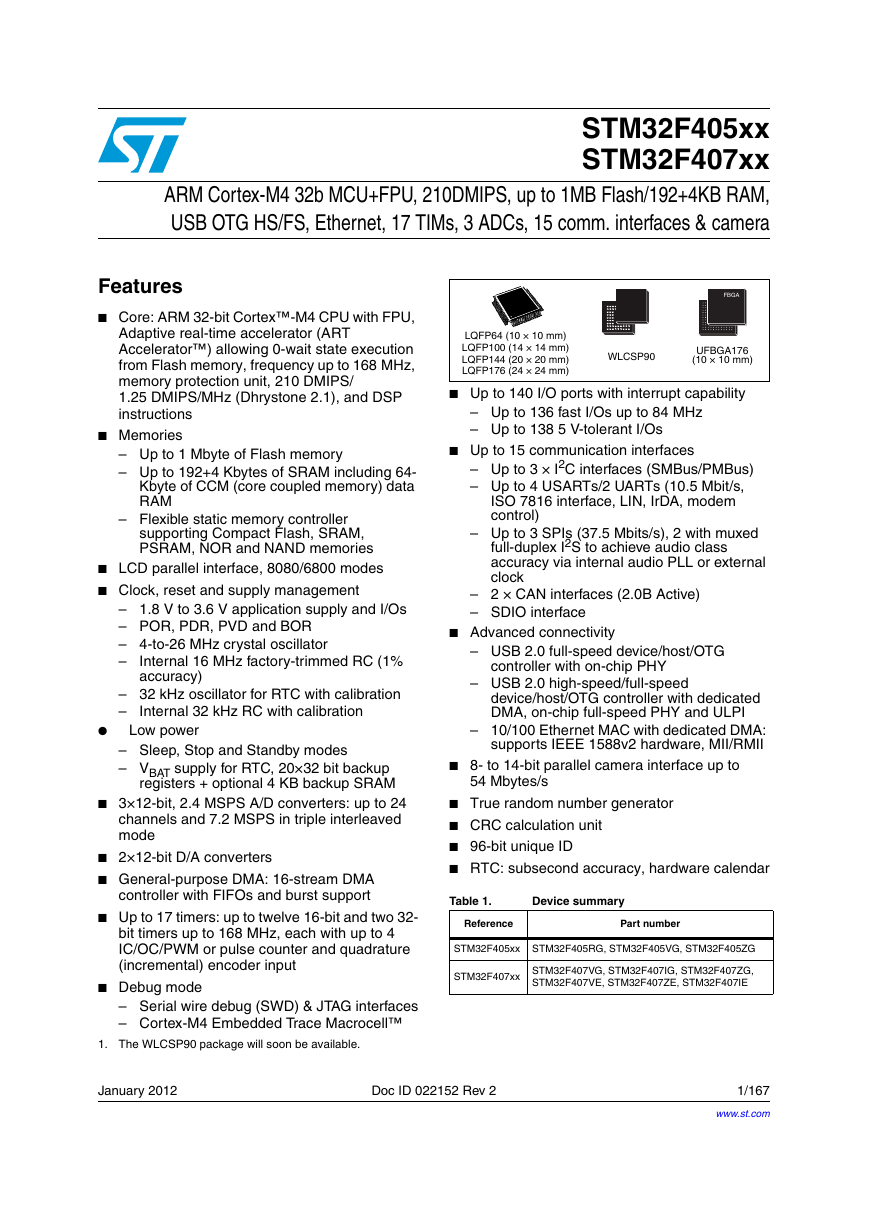 STM32F407ZGT6(芯片资料).pdf
STM32F407ZGT6(芯片资料).pdf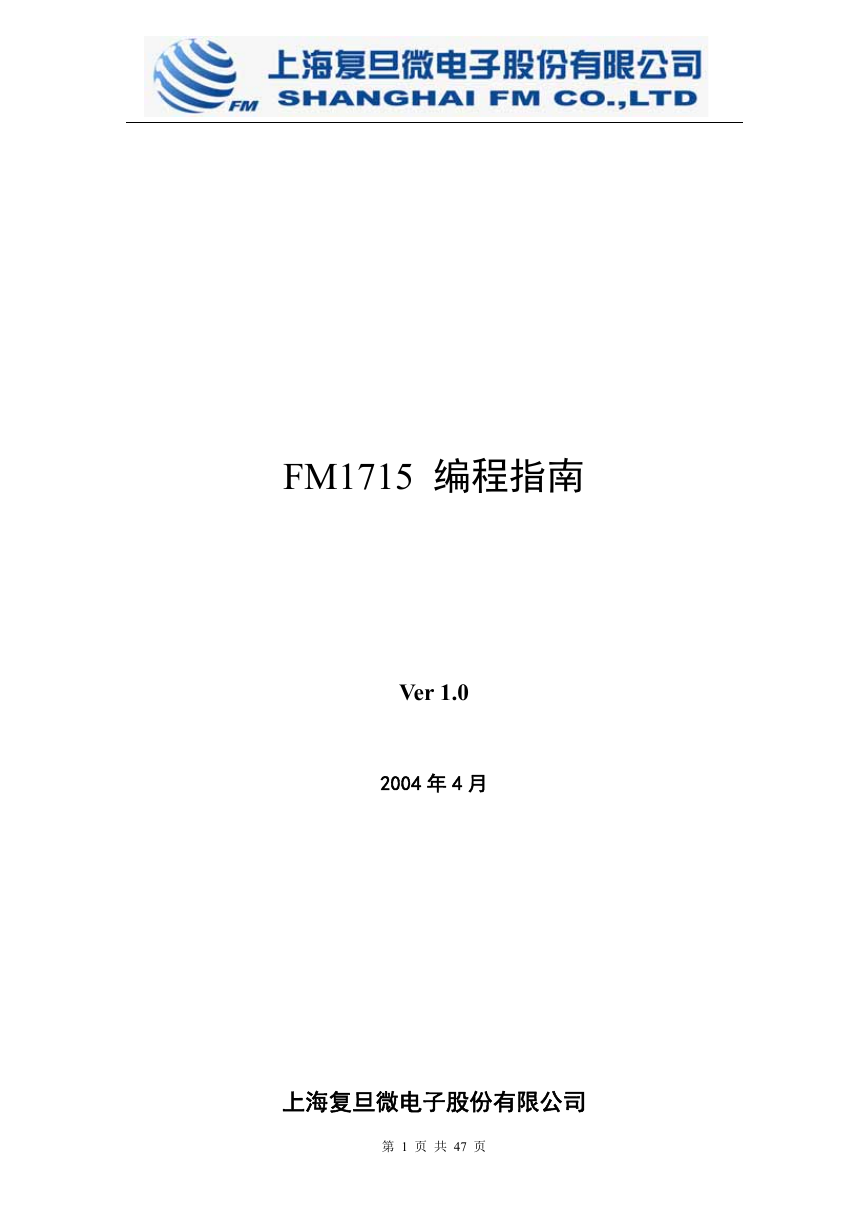 FM1715编程指南.pdf
FM1715编程指南.pdf Profibus教程-7.PROFIBUS-FMS.pdf
Profibus教程-7.PROFIBUS-FMS.pdf